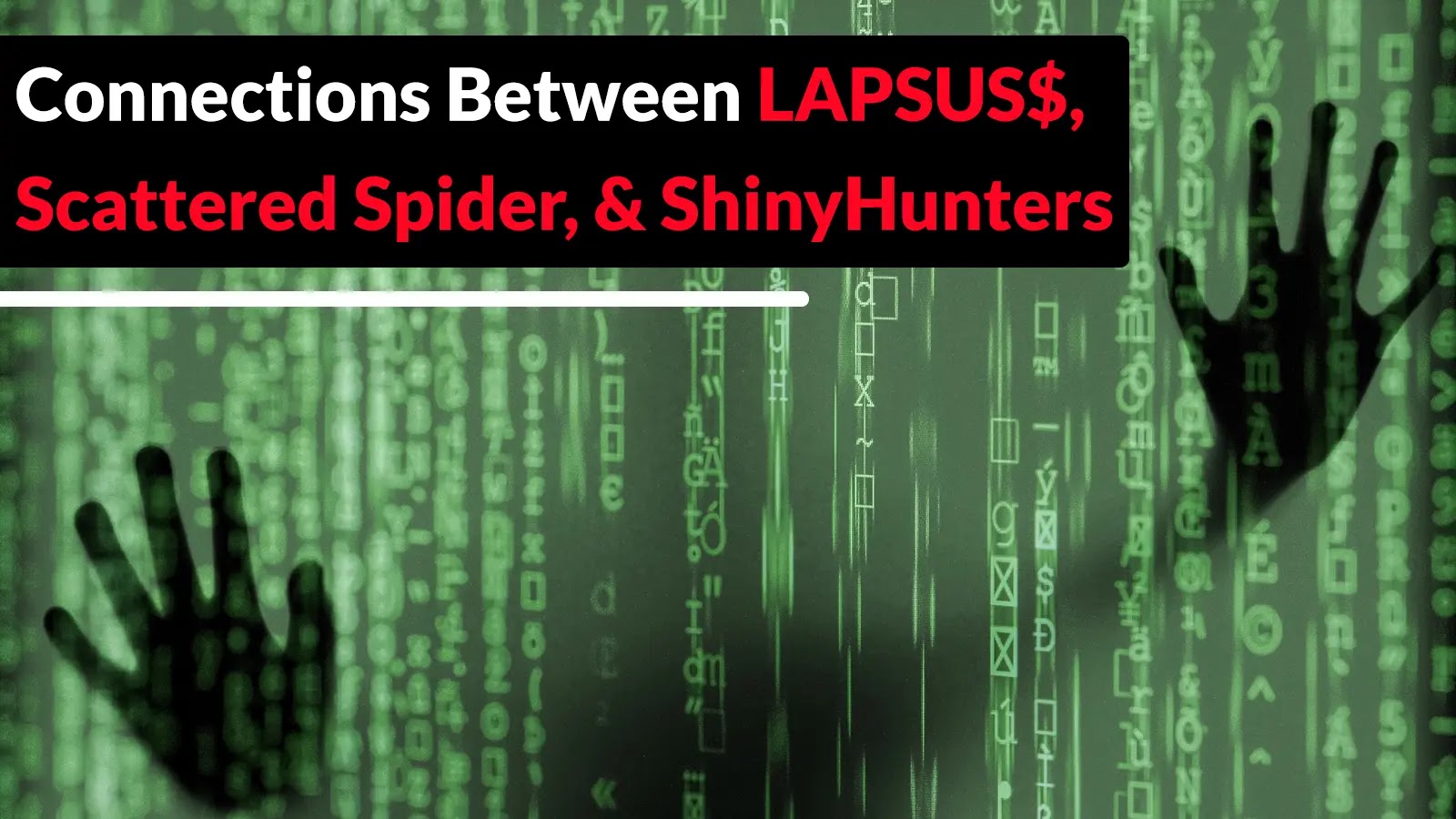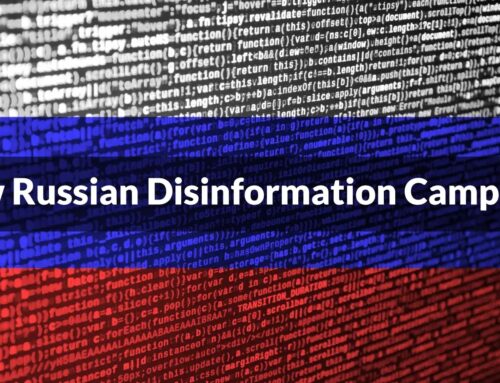
Researchers Uncovered Connections Between LAPSUS$, Scattered Spider, and ShinyHunters Hacker Groups
The cybersecurity landscape just got a lot more complex. Recent research has exposed a tangled web of operational connections, tactical overlaps, and direct collaboration between three of the most notorious English-speaking cybercrime groups: LAPSUS$, Scattered Spider, and ShinyHunters. This isn’t just about individual threat actors; it reveals a highly adaptive cybercrime ecosystem that poses an advanced, persistent threat to organizations globally.
Understanding these intertwined relationships is no longer optional for security professionals. It’s critical for developing effective defense strategies against groups that are increasingly sophisticated, sharing resources, and evolving their attack methodologies at an alarming rate. Let’s delve into what these connections mean for your organization’s security posture.
The Evolution of a Cybercrime Ecosystem
Since 2023, security experts have been tracking the convergence of LAPSUS$, Scattered Spider, and ShinyHunters. Initially perceived as distinct entities, forensic analysis and intelligence gathering have revealed significant operational fluidity and mutual support. This collaboration allows these groups to leverage each other’s strengths, from initial access brokering to data exfiltration and monetization, creating a formidable force in the cyber underground.
- LAPSUS$: Known for highly public extortion and data theft campaigns, often targeting high-profile tech companies. Their modus operandi frequently involves SIM-swapping and insider threats to gain initial access.
- Scattered Spider (UNC3944, Stagehook): This group specializes in social engineering, particularly targeting helpdesks and IT support to gain credentials and bypass multi-factor authentication (MFA). They’ve been linked to significant breaches involving data theft and ransomware deployment.
- ShinyHunters: Primarily a data breach and data selling group, often acting as the monetization arm for stolen information. They are notorious for leaking vast databases on underground forums.
Tactical Overlaps and Shared Methodologies
The connections aren’t just organizational; they extend to shared tactics, techniques, and procedures (TTPs). This convergence allows for more efficient and destructive attacks. Consider these key areas of overlap:
- Social Engineering Prowess: All three groups exhibit advanced social engineering skills. Scattered Spider, in particular, is a master of tricking helpdesk personnel into providing credentials or resetting MFA. LAPSUS$ has also demonstrated similar capabilities, often combining it with SIM-swapping attacks.
- Initial Access Brokering: There’s evidence that members or affiliates of these groups act as initial access brokers (IABs) for each other, providing pathways into target networks that can then be exploited for data theft, ransomware deployment, or further extortion.
- Data Exfiltration and Monetization: Once data is stolen, ShinyHunters often enters the picture, leveraging their established channels for selling sensitive information on dark web marketplaces. This seamless transition from breach to profit highlights the ecosystem’s efficiency.
- Tooling and Infrastructure Sharing: While specific details are often kept secret, intelligence suggests shared or adapted tools and infrastructure, allowing for faster deployment and reduced development costs for each group.
The Advanced Persistent Threat (APT) Posed by This Ecosystem
When these three groups operate in concert, they transcend the capabilities of individual cybercrime gangs. They embody the characteristics of an APT, specifically a financially motivated one:
- Persistence: They actively seek to maintain access to compromised networks for extended periods, monitoring and exploiting opportunities.
- Adaptability: Their ability to share intelligence and TTPs makes them highly adaptable to new defenses and evolving security landscapes.
- Resourcefulness: By pooling resources, whether financial, technical, or human, they can execute more complex and sustained attacks.
This coordinated approach significantly elevates the risk for organizations. A defense strategy effective against one group might be easily circumvented by another within the same ecosystem, leveraging different initial access vectors or exploitation techniques.
Remediation Actions and Defense Strategies
Defending against such a sophisticated and interconnected cybercrime ecosystem requires a multi-layered and proactive approach. Organizations must move beyond reactive measures and implement robust, adaptive security controls.
- Strengthen Multi-Factor Authentication (MFA): Implement phishing-resistant MFA across all critical systems. Hardware security keys (like FIDO2/WebAuthn) or certificate-based authentication are superior to SMS-based or app-based one-time passwords, which are more susceptible to social engineering and SIM-swapping.
- Enhance Social Engineering Training: Regular and realistic training for all employees, especially helpdesk and IT support staff, is paramount. Teach them to recognize and report suspicious requests, verify identities through multiple channels, and be wary of urgency or high-pressure tactics.
- Implement Strict Identity and Access Management (IAM): Enforce the principle of least privilege. Regularly audit user accounts, remove inactive accounts, and ensure strong password policies are in place. Consider Just-In-Time (JIT) access for privileged accounts.
- Improve Endpoint Detection and Response (EDR) & Extended Detection and Response (XDR): Deploy robust EDR/XDR solutions with behavioral analysis capabilities to detect anomalous activity indicative of initial access, lateral movement, and data exfiltration.
- Monitor for Common Initial Access Vectors: Pay close attention to logs for unusual login attempts, brute-force attacks, and any anomalies related to VPNs, RDP, or external-facing services. Patches for vulnerabilities like CVE-2023-38831 (WinRAR RCE) or similar widely exploited flaws are critical.
- Data Loss Prevention (DLP): Implement DLP solutions to monitor and prevent sensitive data from leaving the organization’s network without authorization.
- Incident Response Plan Review: Regularly review and update your incident response plan to account for sophisticated social engineering and rapid data exfiltration scenarios. Conduct tabletop exercises to test its effectiveness.
- Threat Intelligence Sharing: Engage with threat intelligence platforms and communities to stay abreast of the latest TTPs, indicators of compromise (IoCs), and intelligence related to LAPSUS$, Scattered Spider, ShinyHunters, and their affiliates.
Key Takeaways for Cybersecurity Professionals
The interconnectedness of LAPSUS$, Scattered Spider, and ShinyHunters signals a dangerous maturation of the cybercrime landscape. It underscores the importance of a holistic security strategy that accounts for human vulnerabilities as much as technological ones.
- Collaboration is Key: Just as these threat actors collaborate, so too must security teams both internally and externally with intelligence communities.
- Focus on Identity: Identity is the new perimeter. Protecting user accounts, especially privileged ones, is paramount.
- Assume Breach Mentality: Design your defenses with the assumption that a breach is inevitable. Focus on rapid detection, containment, and recovery.
- Stay Informed: Continuous learning about evolving TTPs is essential to adapt your defenses effectively.
This evolving cybercrime ecosystem demands vigilance and innovation from cybersecurity defenders. By understanding the intricate relationships and shared tactics of these groups, organizations can better prepare, detect, and respond to the complex threats they pose.





